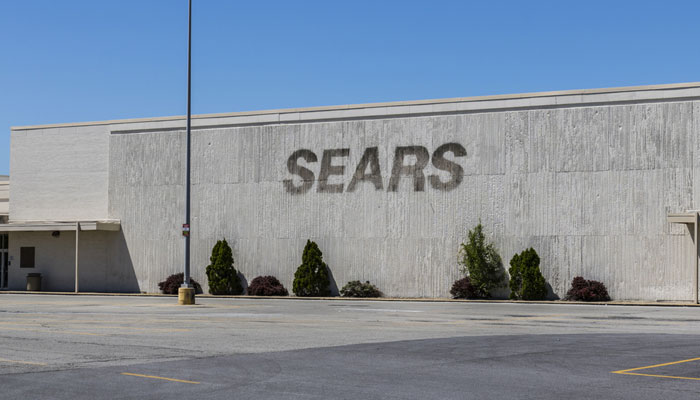Shutterstock
Sears Holdings continues to shutter its Sears and Kmart stores, following a mid-October bankruptcy filing, announcing it will close 40 more stores in the near future.
Economists predict that a coming recession could close 30 percent of US malls.

Sears holdings filed for bankruptcy in mid-October, following previous rounds of store closures over the past few years, as well as, liquidation sales in 2018.
Sears announced last week that it plans to close an additional 40 Sears and Kmart retail locations in the near future.
In 2013, there were about 2,000 Sears and Kmart retail stores in operation.
However, Business Insider anticipates that by February 2019, only about 500 Sears and Kmart retail stores will remain in business. That’s a 75% reduction in just five years.
As more Americans shop online, brick-and-mortar retail outlets are suffering the effects as they continue to shutter their real-world storefronts.
Many retail workers have said that shoppers are using retail outlets more as showrooms, rather than places to make purchases. They say shoppers come into the physical locations to test out products they are interested in buying, then go home and purchase them online where they can receive larger discounts and avoid paying sales tax.
As retail stores continue to decline, since 2016, approximately 89,000 Americans employed in the retail sector have lost their jobs.
Economists are forecasting a future recession and predict that strip malls and larger regional malls are going to suffer a big impact, with midline businesses taking the hardest hit. Economists foresee 30% of malls closing during the next recession.
Experts predict that the only retailers that might survive will be stores that serve more as showrooms rather than warehouses, where customers come in to try on or try out merchandise before ordering. This reflects the consumer behavior that was previously mentioned above, which retail workers are observing.